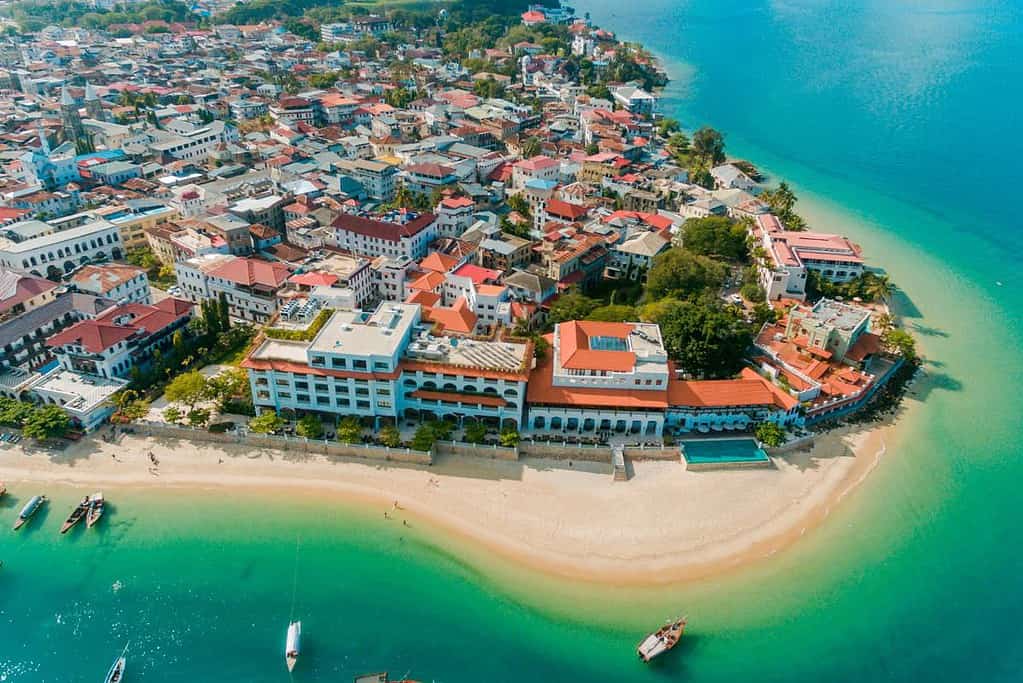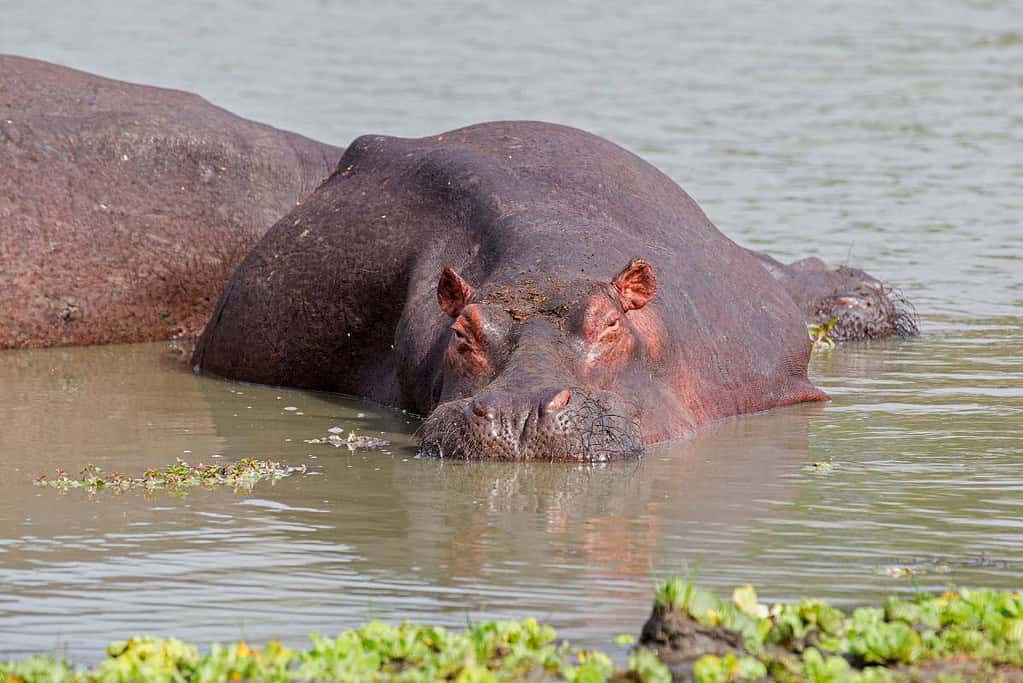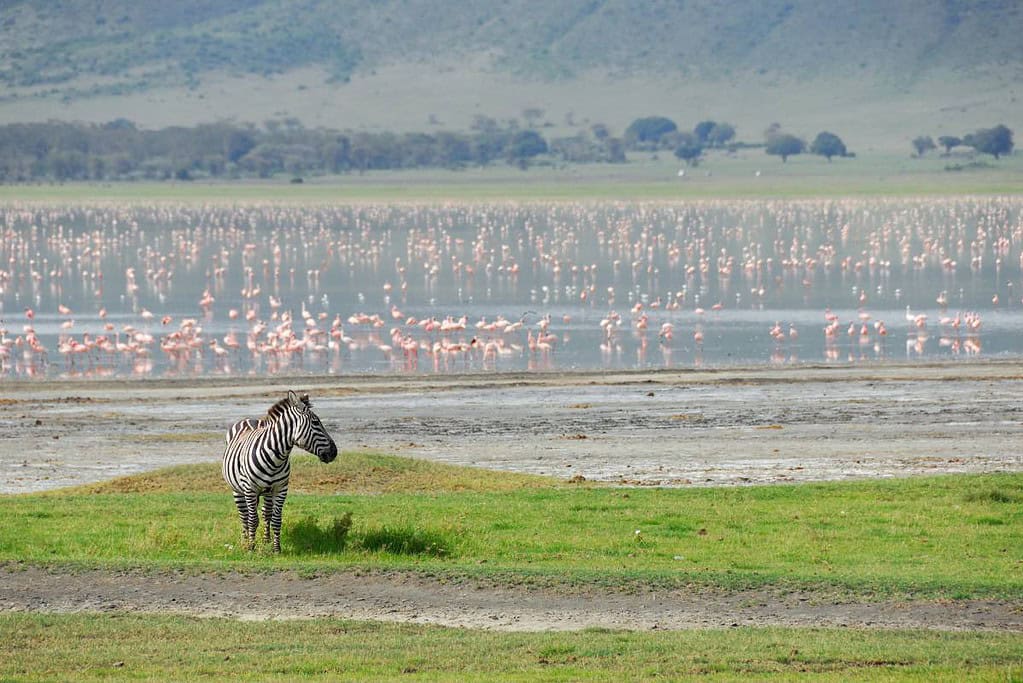Table of Contents
The UNESCO Sites in Tanzania have recognized 7 cultural and natural landmarks as UNESCO World Heritage Sites in Tanzania and 6 locations on the Tanzania UNESCO tentative list. These tourist sites in Tanzania are acknowledged for their unique and valuable cultural, natural, artistic, and historical significance and are preserved for future generations to enjoy.
In addition to these 7 sites in the Tanzania UNESCO list, many other places to travel to Tanzania are being considered for UNESCO recognition. These sites, listed on the tentative list, showcase the country’s rich cultural heritage and are waiting for approval to join the prestigious and famous World Heritage Sites list.
To help visitors discover these remarkable Tanzania tourist attractions, we have assembled an interactive map of the UNESCO sites in Tanzania.
Tanzania UNESCO Map
Click markers to show information and photo.
World Heritage Sites in Tanzania
UNESCO World Heritage Sites in Tanzania
There are 7 UNESCO World Heritage Sites in Tanzania. All of these three sites are listed under the Cultural category.
- Kondoa Rock-Art Sites
- Ruins of Kilwa Kisiwani and Ruins of Songo Mnara
- Stone Town of Zanzibar
- Kilimanjaro National Park
- Selous Game Reserve
- Serengeti National Park
- Ngorongoro Conservation Area
UNESCO World Heritage Sites in Tanzania are protected locations for their cultural and natural importance.
Kondoa Rock-Art Sites

The Kondoa Rock-Art Site is a UNESCO World Heritage Site located in the central region of Tanzania. It features more than 150 painted rock shelters dating back to the 2nd millennium BCE. The rock art includes depictions of animals, human figures, and other symbols that offer insight into the lives and beliefs of the people who created them. The Kondoa Rock Art Sites are some of the most well-preserved and significant examples of rock art in Africa, and they provide a unique window into the continent’s ancient history and cultural heritage.
Ruins of Kilwa Kisiwani and Ruins of Songo Mnara

The Ruins of Kilwa Kisiwani and Ruins of Songo Mnara is a UNESCO World Heritage Site on the southern coast of Tanzania. The ruins are the remains of two Swahili trading settlements that flourished from the 9th to the 19th centuries. These settlements were essential trade centers along the Indian Ocean, connecting Africa to the Middle East and Asia. The ruins are well-preserved and include impressive structures like mosques, tombs, and palaces. The site offers visitors a glimpse into the rich history and culture of the Swahili people, and it is a must-visit destination for anyone interested in African history and architecture.
Stone Town of Zanzibar

The Stone Town of Zanzibar is a UNESCO World Heritage site on the western coast of Zanzibar Island, Tanzania. It is a well-preserved example of the Swahili coastal trading towns of East Africa, and the architecture reflects the cultural influences of the African, Arab, Indian, and European traders who used to visit the town. The town features narrow streets, coral stone buildings with ornate wooden balconies, and large Arab-style houses with open courtyards. Stone Town has several historic landmarks, including the House of Wonders, the Old Fort, and the former slave market. The Stone Town of Zanzibar is a must-visit destination for anyone interested in history, culture, and architecture.
Kilimanjaro National Park

Kilimanjaro National Park is a UNESCO World Heritage site in Tanzania, East Africa. The park is home to the highest mountain in Africa, Mount Kilimanjaro, which stands over 5,895 meters above sea level. The park’s diverse landscape includes tropical rainforest, alpine meadows, and barren peaks, and it is home to a wide variety of plant and animal species, many of which are endemic to the area. The park is also home to several indigenous tribes, including the Chagga people, who have lived there for hundreds of years and developed unique cultural traditions and practices. Kilimanjaro National Park is a must-visit destination for anyone interested in nature, adventure, and cultural tourism.
Selous Game Reserve

Selous Game Reserve is a UNESCO World Heritage Site located in southern Tanzania. It is one of the largest game reserves in the world and is home to a vast array of wildlife, including elephants, lions, cheetahs, and hippos. The reserve is also home to over 400 species of birds, making it a popular destination for birdwatchers.
The reserve is named after the explorer and conservationist Frederick Selous, who was killed in action during World War I. It covers an area of approximately 50,000 square kilometers and is largely undisturbed by human activity, making it a prime destination for wildlife safaris and nature lovers.
Serengeti National Park

Serengeti National Park is a UNESCO World Heritage site located in northern Tanzania. The park covers an area of 1.5 million hectares and is home to a diverse range of wildlife, including the famous “Big Five” game animals: lions, leopards, elephants, buffalos, and rhinos. The park is also known for its annual wildebeest migration, one of the world’s largest animal migrations. The park’s landscape includes vast grasslands, woodlands, and riverine forests, providing habitats for flora and fauna. Visitors to the park can enjoy game drives, hot air balloon rides, and cultural experiences with local Maasai tribes. Serengeti National Park is a must-visit destination for anyone interested in wildlife and natural beauty.
Ngorongoro Conservation Area

The Ngorongoro Conservation Area is a UNESCO World Heritage Site located in Tanzania. It is home to the Ngorongoro Crater, the world’s largest unbroken volcanic caldera and a stunning natural wonder. The area is also home to a diverse range of wildlife, including lions, elephants, zebras, and many species of birds. The conservation area is essential for conserving endangered species and preserving the local Maasai culture, which has lived there for thousands of years. On safari tours, visitors can explore the Ngorongoro Crater and surrounding areas and experience the beauty and wildlife of one of Africa’s most iconic destinations.
Tanzania UNESCO tentative list
- Oldonyo Murwak
- Gombe National Park
- Jozani – Chwaka Bay Conservation Area
- Eastern Arc Mountains Forests of Tanzania
- The Central Slave and Ivory Trade Route
- Tendaguru Paleontological Site (TPS)
Tours in Tanzania
Our choices of tours in Tanzania are divided into thematic features such as Zanzibar, Mount Kilimanjaro, and the Mount Kilimanjaro Experience.
